For brands to succeed in the future of retail, zero-party data will be the make-it or break-it factor.
Yes, it’s that important. That’s because zero-party data is information that fundamentally helps brands build a better relationship with customers, which has huge perks for both your business’s bottom line and your customer’s experience with your brand.
In fact, first-party data improves customer experiences for 9 in 10 brands. It has taken over from third-party data. The stats below make it clear why 👇
- Almost a third of consumers reject cookies on websites
- Half of consumers would rather leave a website than accept cookie terms
Without capturing these data points, detecting shifts in customers needs to then personalise experiences is becoming somewhat tricky.
And that’s why CMOs are prioritising first party data capture in 2023.
In this blog, we’ve compiled a list of the best zero-party data examples. We’ve created this list based on first-hand experience, client engagements, and leading retailers’ real-life examples.
Let’s dive right in.
The 5 best zero-party data examples
If you’re new to zero-party data, you might be wondering how you capture it. Essentially, there are a variety of ways retailers can collect it, including:
- 🛍️Online
- 🛒Instore
- 📧Email preferences
- ✅Quizzes
- 📑Surveys
- ⭕Polls
To put this into a practical perspective, let’s look at some of the best examples from leading-edge retailers:
Zero-party data example #1: Take the fitting room quiz with ThirdLove
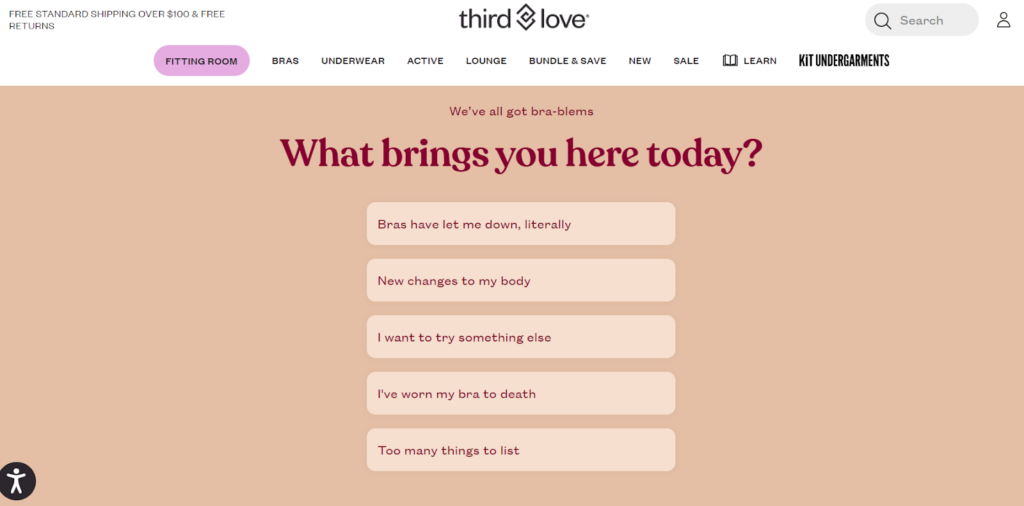
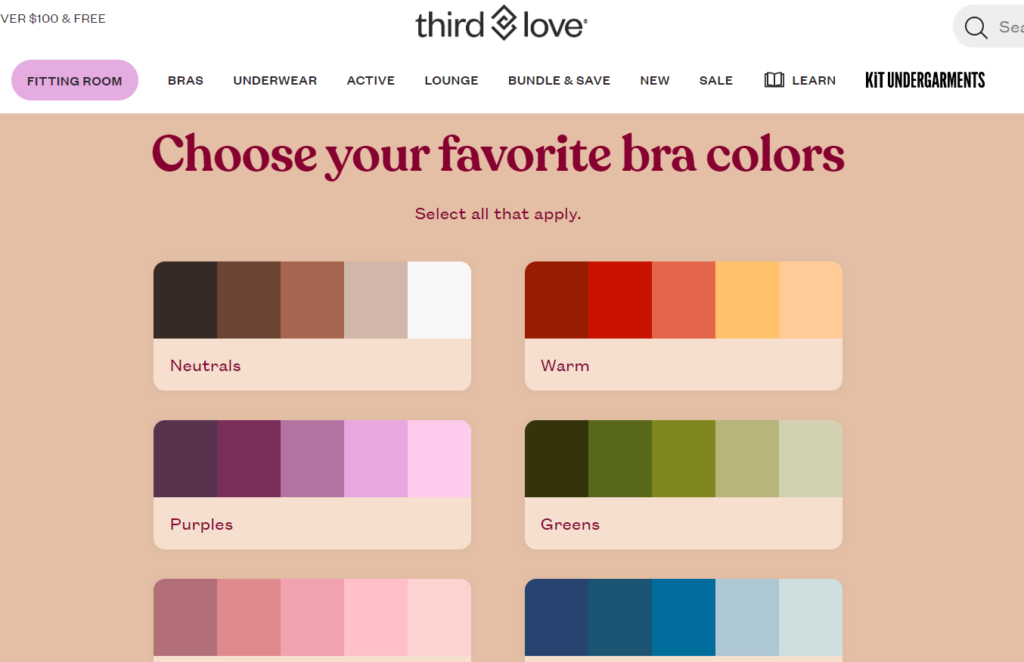
ThirdLove, an underwear retailer, faced the challenge of having to stand out from the crowd. Using a fitting room quiz, they nailed how they weave zero-party data into their marketing strategy.
ThirdLove invites consumers to share why they are shopping for underwear and all their preferences, such as colour, style, and fit. This allows ThirdLove to dig deeper into purchase motivations, what types of products their consumers seek, and how competitors’ products have failed them.
Shoppers willingly provide this information to third love, who then use it to curate an appealing list of recommendations for them – plus discounts off their first purchases if they opt-in.
ThirdLove also uses this zero-party data to help guide key business decisions. For instance, the company built an internal algorithm that uses data gathered from the surveys to inform supply chain decisions, like how to manage the inventory of particular sizes. It also helps ThirdLove understand how size trends change over time.

Zero-party data example #2: Spin-to-win with Origins

Skincare retailer Origins added an element of fun gamification to try and reengage audiences. The reason this works so well is because people love games. They’re fun and you often get something to take away for your efforts. That’s the key reason why gamification has become part of their online shopping experience.
Spin-to-win is a popular gamification tactic that provides a fun element, offers your consumers a little bonus, and at the same time can provide your brand with useful zero-party data insights.
Now, Origins were clever with this and sent its spin-to-win game to lapsed customers via an email campaign. Once you entered data on your preferences, you could then win free natural products, discount codes, or free delivery. The value of reigniting inactive customers is immense. Not least of all because in many parts of the world, like Europe with GDPR, if a name is inactive, you need to remove it from your marketing database.
Zero-party data example #3: Take the gift finder quiz with Mecca
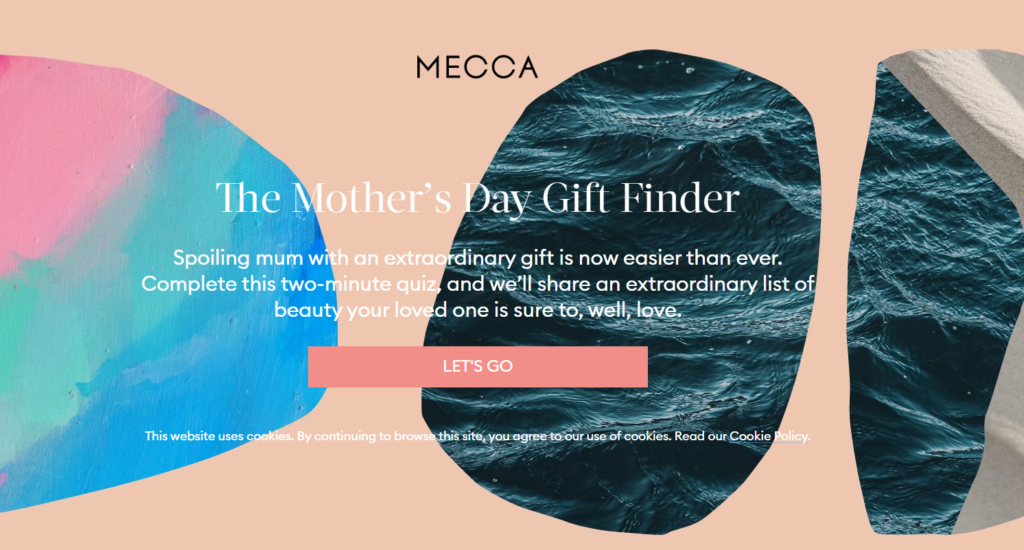
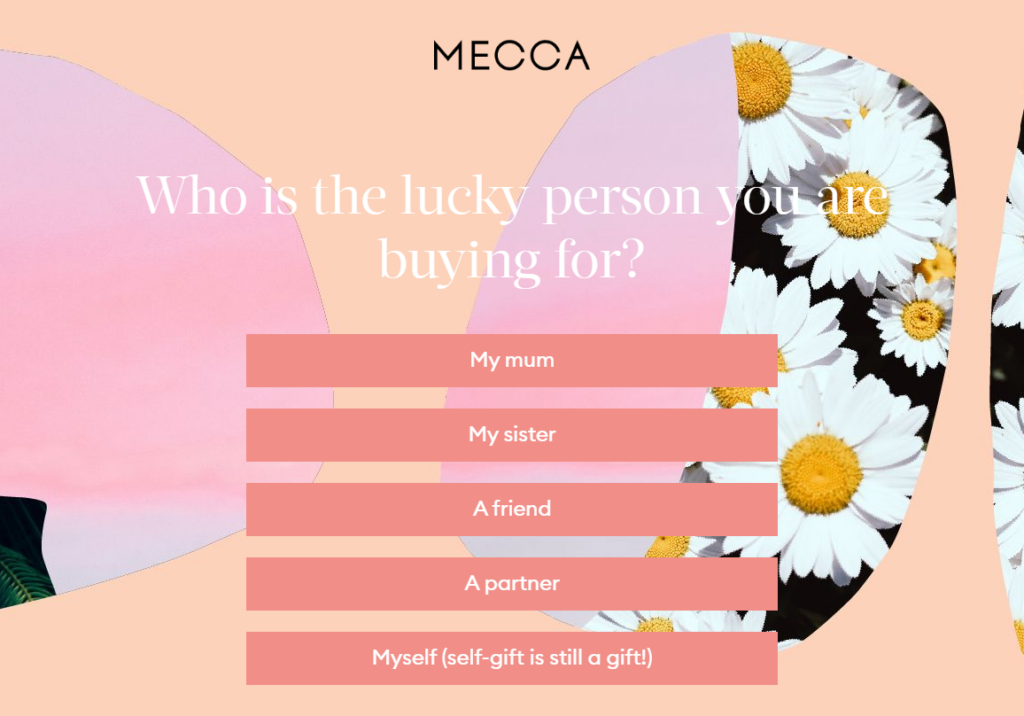
Mecca, an Australian beauty retailer, found a way to capture zero-party data through a Mother’s Day gift finder quiz.
The quiz is aimed to help Mecca segment customers and understand customer preferences. And at the end of the quiz, you are asked what type of beauty shopper you are – ranging from beauty novice to beauty lover.
Now, here’s the best bit…
When consumers tell you the type of shopper they are, marketing teams can leverage this insight to adjust email frequency with announcements, content or sales based on customers’ interest in the products.
Ultimately, this level of personalisation helps ensure a positive customer experience and improved conversions.
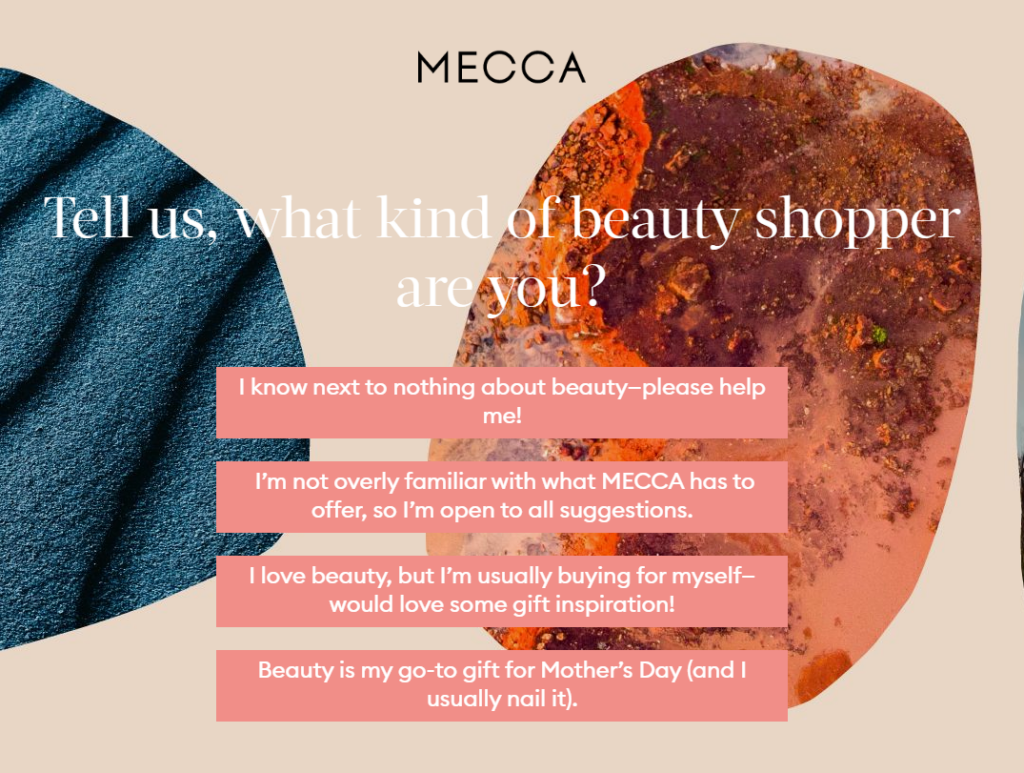
Zero-party data example #4: Reactivating lapsed consumers with Michaels

Michaels, the largest arts and crafts retailer in North America, activated more than 80,000 lapsed email addresses with the use of a survey and holiday-themed advent calendar.
So, how did this work?
Through this gamification approach, Michaels captured valuable zero-party data to help create personalized experiences and highly relevant marketing communications. The calendar included a combination of unique events, including incentives to purchase, as well as a progressive data capture mechanism.
Customers received two emails a day for seven days promoting the Advent calendar and inviting customers to take a survey and subsequently receive rewards.
And the overall results? 80,000+ unique emails were reactivated with an estimated value of $400k. Plus, engagement rates soared to 41%; with 53% of those who engaged with the intro survey continuing to engage with the campaign.
On top of this, customers provided 33% more data during the campaign – capturing 2500 previously uncapturable unique data points. This data included who they are, what they’re looking for from the major arts and crafts retailer, and their communication preferences.
Zero-party data example #5: Penhaligon’s personalised perfume experience


Perfume specialists, Penhaligon’s, uses an online interactive experience to entice potential customers into choosing the right fragrance for them. The questions aren’t your typical queries and they’re tailored to the audience, depending on the answers you provide early on.
The questions are a little quirky and fun, and they enable Penhaligon’s to create a profile which includes purchase intentions. Much better than relying on out-of-date third-party data – or less trustworthy second-party data. The prospective customer knows the value in sharing accurate information: they get a much more personalized experience.
So, what does the consumer get in exchange? In this example, zero-party data collection results in the consumer receiving two free samples to try out, based on their customer profiles and style preferences they’ve shared.
Essentially, there’s a value exchange – customer personalization and free samples in exchange for information, that is captured in a more engaging way. And long-term, Penhaligon’s can tailor the customer journey, build more meaningful relationships and inevitably build customer loyalty.
Make zero-party data the cornerstone of your strategy
To sum up, if one of your business goals is to get better results from your marketing spend or improve LTV, capturing zero-party data is crucial. Luckily, there are many ways to entice consumers to provide you with zero-party data.
And you can then use it across your entire business. Whether you are incorporating this high-quality data into your digital channels, preferred models, direct marketing campaigns, or informing product development and inventory.
What we’re learning is that many consumers are happy to share zero-party data with retailers that offer something of real value in return.
And with more privacy laws and privacy regulations on the use of third-party cookies sure to materialise in the future, now is the time to make zero-party data the cornerstone of your marketing mix if you really want to generate ROI for your marketing efforts and engage consumers.
It’s clear that leading retail brands are fully embracing gamification and zero-party data capture to increase engagement and conversion. They also increase the average order value too.
Why? Because the integration of gamification elements allows you to entice customers with great offers. It’s important, however, that they are implemented correctly. The last thing you want to do is get a poor ROI from this approach..
Final takeaway: Look for providers, like 3radical, to help you to implement a zero-party data strategy and tailor it for your brand for the best results.
If you are ready to get started, you can talk to sales today.
Looking for more?
Check out our resources and expand your knowledge and skills:
